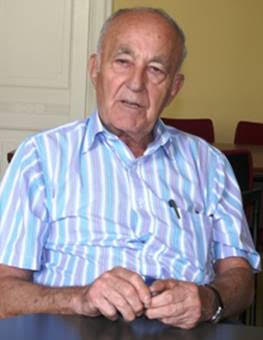
THE VOICE OF INTERNATIONAL LITHUANIA
|
VilNews has its own Google archive! Type a word in the above search box to find any article.
You can also follow us on Facebook. We have two different pages. Click to open and join.
|
Archive for November, 2012
- Posted by - (0) Comment

One of the leading electronics manufacturing services suppliers in Scandinavia – Kitron – will expand its manufacturing facility in Kaunas, Lithuania and invest almost EUR 6 million into this project. The expansion strategy of the Norwegian company in Lithuania encompasses an increase in its production capacity, the creation of 60 new job openings and an improvement to the company‘s revenue by 40 per cent.
In Kaunas, Kitron already produces electronic control systems for high-speed rail vehicles and electric grass mowers, electronic circuits for ultrasound devices, scientific equipment for seabed research, mobile blood test devices, smart grid/automatic meter reading systems and other electronic equipment.
“To win this expansion project, Lithuania competed with the US, Norway and China, all of which are well-known to Norwegian investors as countries where they have already established manufacturing facilities. Our country was chosen because of its convenient location for logistics, the low costs of labour, and the resources to ensure production quality. Since the Norwegian company also supplies its goods to the defence and medical equipment industries, qualitative criteria were important to the decision on location,”- said the Managing Director of Kitron Lithuania Mindaugas Sestokas.
- Bookmark :
- Digg
- del.icio.us
- Stumbleupon
- Redit it
- Posted by - (0) Comment
The Baltic warehousing and logistics property market is getting back on its feet and strongly moving forward, with the prime properties showing the lead.
After painful adjustments to the new market conditions during the crisis, which caused sharp rent rate decreases and dramatic vacancy increases (especially in the speculative and lower class W&L properties), the W&L property market experiences a robust come-back. The prime W&L vacancies in the Baltic capitals are as low as 5% in Vilnius (LT) and 10% Tallinn (EE) and Riga (LV), whereas the prime rent rate increases for top class premises are expected to be of 3-4% p.a. in Vilnius and Tallinn, and up to 10% p.a. in Riga in 2012-2013. In Vilnius, the companies which require modern W&L spaces larger than 3,000 sq. meters find it hard to lease adequate premises in prime W&L property market, unless they are willing to go for Built-to-Suit solutions or can accept the premises of lower quality/location parameters.
To illustrate the case, a strong Lithuanian developer Ogmios recently completed the third stage of the Airport Business Park - a W&L complex of over 22,000 sq.m located in front of the Vilnius International Airport. Even before the completion, the property was fully preleased, with two parts being Built-to-Suit solutions for DHL and AVON, and the third leased by Hellmann and ACE Logistics, among several other smaller tenants. The complex also includes a retail part of over 2,000 sq.m which was also preleased by Norfa, one of the largest Lithuanian retail chain operators. The developer intends to sell the Airport Business Park, with Newsec as the sell-side advisor.
About Ogmios
Ogmios Group is one of the leading real estate developers in Lithuania focusing on commercial real estate. Ogmios Group owns or manages more than 300,000 sq. metres of commercial real estate located in 5 major Lithuanian cities, worth more than EUR 200 million. Being among the top Baltic market players, Ogmios developed lasting successful relationships with many office, retail and logistic tenants, including DHL, AVON, Daewoo, ACE Logistics, Hellmann Worldwide Logistics, Systemair, VBH, Onninen, and many other.
About Newsec
Newsec is Northern Europe’s only full-service company in the property sector, with 12 offices in Lithuania, Latvia, Estonia, Finland, Sweden, Norway and Kaliningrad (Russia). Newsec offers services to property owners and companies that lease or own their properties. Newsec has about 500 employees and has recently provided advisory services in transactions with a total value of more than 9 billion euro. Annually we valuate properties worth more than 65 billion euro and manage more than 1,000 properties with a total value of more than 10 billion euro. Through our well-maintained international network of 6,000 consultants, we can offer our services in the global market. This makes us Northern Europe’s only full-service property house in the property sector, which provides the company with a unique ability to forecast the future.
The first issue of the comprehensive market analysis Newsec Property Outlook was published in 2001. Get your own copy of the latest edition at www.newsec.com/npo
Contact for more information:
Neringa Rastenyte
Head of Transactions, Baltics
+370 686 17 468
n.rastenyte@newsecbaltics.com
- Bookmark :
- Digg
- del.icio.us
- Stumbleupon
- Redit it
- Posted by - (0) Comment

Lithuanian electricity transmission system operator Litgrid has connected five wind turbines with a combined capacity of 10 MW to the electricity transmission grid in Didšiliai (Šilutė District). The total capacity of the Didšiliai wind farm will reach 21.8 MW, once the remaining wind turbines are connected to the grid by the end of the year.
“The capacity of wind farms currently connected to the electricity transmission grid totals 161.83 MW,” said CEO of Litgrid Virgilijus Poderys. “Terms for connecting more wind turbines with a capacity of 595 MW have been issued and technical projects have been harmonised. Lithuania has undertaken to integrate enough new wind turbines into the energy system before 2020 to reach a capacity of 500 MW. Given the expansion of renewable energy resources, we will be able to meet this target well before the set deadline.”
The Didšiliai wind farm is the second wind farm in the Šilutė District to be connected to the electricity transmission grid this autumn. A 39.1 MW wind farm in Čiūteliai was opened in September. As wind power developers ask to be issued with terms for connecting to the electricity transmission grid and more electricity is being generated by wind farms, efforts are being made to improve the electricity transmission grid in western Lithuania, where most of the country’s renewable energy projects are planned.
The first major wind farm with a capacity of 30 MW was connected to the grid in 2006. Lithuania currently operates 10 major wind farms, all in all 79 wind turbines are connected to the electricity transmission grid. In 2011, the wind turbines generated a total of 0.47 TWh of electricity. The country’s electricity demand was 10. 4 TWh.
- Bookmark :
- Digg
- del.icio.us
- Stumbleupon
- Redit it
- Posted by - (0) Comment
|
|
|
November/December
2012
|
KAUNAS IN FOCUS 24 NOVEMBER – 26 DECEMBER 2012 |
|
PRELIMINARY
LIST OF TOPICS:
|
Sat |
About Kaunas, |
- Visit Kaunas during Advent! |
Hotel: |
|
Wed |
- Innovative Kaunas |
My Kaunas: Vladas Lasas |
- Free Economic Zone |
|
Sat |
- Rich cultural life - Čiurlionis Museum, movie etc |
- Kaunas Filharmonija |
Jazz |
|
Wed |
Education & Science |
My Kaunas: Virginijus Kundrotas |
- Vytautas Magnus University |
|
Sat |
Kaunas Old Town |
My Kaunas: Edmundas Kolevaitis |
Restaurants & Nightlife |
|
Wed |
Business in Kaunas |
My
Kaunas: Romas Bričkus, |
Kraft Jacobs |
|
Sat |
Sporty Kaunas |
- Basketball |
- Kaunas Sports Hall from 1939, Europe’s first basketball
arena |
|
Wed |
- Political Kaunas: |
My Kaunas: Mayor interview |
Interwar presidents: |
|
Sat |
Christmas traditions in Kaunas |
My Kaunas: Vytautas Valaitis |
Christmas Tree made of cones |
|
Wed |
- Jewish Kaunas |
My Kaunas: Irena Veisaite (a Kaunas Ghetto survivor) |
Chiune Sugihara, |
- Bookmark :
- Digg
- del.icio.us
- Stumbleupon
- Redit it
- Posted by - (0) Comment
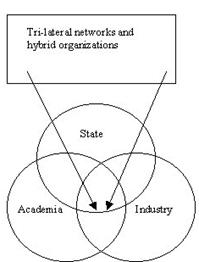
Triple Helix 3:
The Scandinavian model.
This triple helix model is an attempt to account for a new configuration of institutional forces emerging within innovation systems (a stage the Nordic countries to a quite high degree have reached), and I believe this is a good model for joint cooperation and innovation between the Nordic and the Baltic States. Read more...
- Bookmark :
- Digg
- del.icio.us
- Stumbleupon
- Redit it
Now everybody is suspicious of everybody
- Posted by - (0) Comment
![]()

Excellent, Aage!
Unfortunately, we still have those legacies when all the lines of institutional collaboration were parallel: from LT to Moscow. Anything more complex and/or multi-directional than that was viewed with strong suspicion by the KGB and with quite a good dose of justification. During the Soviet occupation, the Sovnarkhozy attempt at such reform by LT was also suspect. As a legacy of the occupation, now everybody is suspicious of everybody as such trans-institutional cooperation is just out of the Soviet LT genes:). The Sajudis failure to conduct the Czech style lustration to weed big Bolshevik traitors out of future power in free LT just conserved those bad legacies.
Valdas Samonis
Toronto
- Bookmark :
- Digg
- del.icio.us
- Stumbleupon
- Redit it
- Posted by - (0) Comment
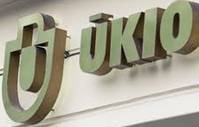
AB Ukio Bankas, the Lithuanian bank controlled by Edinburgh soccer club Heart of Midlothian Plc owner Vladimir Romanov, fell to an eight-year low on the Vilnius exchange, losing a quarter of its value in a month.
The shares fell as much as 12.4 percent today, closing down 7 percent at 0.12 euros ($0.15), the lowest since Oct. 28, 2004, according to data compiled by Bloomberg. Volume of 766,022 shares was 11 times the three-month daily average. The shares have lost 24.5 percent since Oct. 10.
The decline began after the bank reported a nine-month net loss on Oct. 29, and accelerated on Nov. 6, when it said it took over a Lithuanian sports arena developer from debtors. Swedbank changed the shares to ‘no recommendation’ from ‘buy’ on Nov. 9, citing a lack of information about the effect of the arena transaction. Romanov owns 64.9 percent of Ukio Bankas (UKB1L) shares, according to a note in the bank’s earnings report.
“Investors really question the valuation of that property developer, which is a big part of the bank’s assets, and so they don’t know how much its equity may be worth now,” Finasta investment bank analyst Tadas Povilauskas said by phone. “And if Romanov hasn’t rescued his soccer club and hasn’t increased the share capital of Ukio Bankas as was planned some time ago, it probably means he just can’t find the money.”
Read more...
- Bookmark :
- Digg
- del.icio.us
- Stumbleupon
- Redit it
- Posted by - (0) Comment
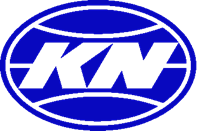
Klaipedos Nafta, which runs an oil terminal on the Baltic Sea and plans to build a liquefied natural-gas terminal, fell to an 18-month low after the Lithuanian company said it was short of working capital.
The shares fell 3.2 percent to 0.36 euros ($0.46) at 11:30 a.m. in Vilnius, the lowest since May 17, 2011, according to data compiled by Bloomberg. The volume of 26,000 shares was more than four times the three-month daily average.
Klaipedos Nafta, which is 72 percent-owned by the Lithuanian state, published two tenders for financing late on Nov. 9. The first seeks a long-term credit of as much as 73 million euros and a guarantee of $50 million, while the second seeks overdraft services in the amount of 120 million litai ($44.2 million).
Without the extra financing, the company would face a shortage of working capital as early as January 2013. Read more...
- Bookmark :
- Digg
- del.icio.us
- Stumbleupon
- Redit it
- Posted by - (0) Comment
What can Lithuania learn
from its AAA-neighbours?
By Aage Myhre, Editor-in-Chief
Lithuania has powerful neighbours, as the overwhelming majority of the world's countries with AAA credit rating are located in Scandinavia and Western Europe. These countries, however, are successful in many different ways, not least with regard to social welfare, health care, education, rule of law, transparency, press freedom and a very good balance between government, business, education, science, and more.
The table below tells an interesting story about the relationship between these qualities for a group of nations that lead in world development. These tremendous success stories is something Lithuania should try to learn from.
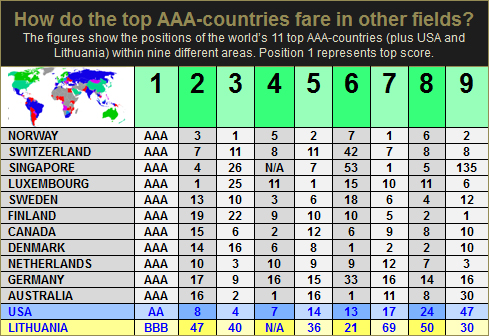
1. Credit rating, Standard & Poor’s
2. GDP (PPP) per capita
3. Human Development Index (HDI), UN
4. Best country to live in, OECD
5. Social welfare
6. Education
7. Rule of Law
8. Corruption, Transparency International
9. Press freedom
- Bookmark :
- Digg
- del.icio.us
- Stumbleupon
- Redit it
What can Lithuania learn from its AAA-neighbours?
- Posted by - (6) Comment
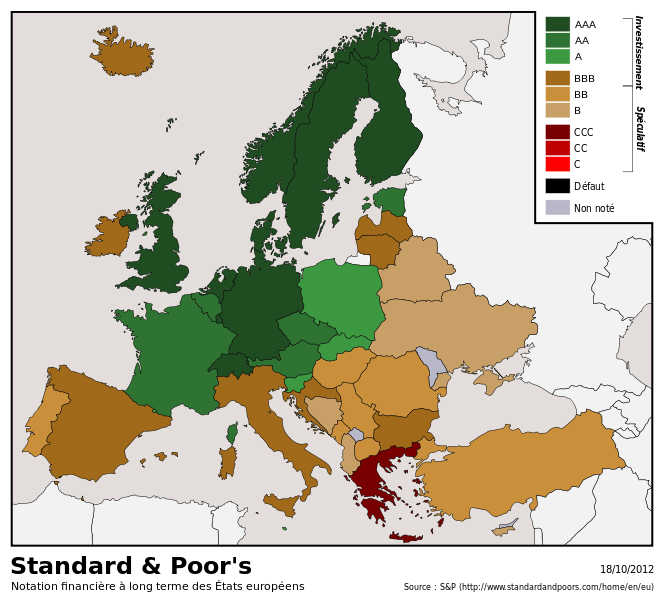
By Aage Myhre, Editor-in-Chief
Lithuania has powerful neighbours, as the overwhelming majority of the world's countries with AAA credit rating are located in Scandinavia and Western Europe. These countries, however, are successful in many different ways, not least with regard to social welfare, health care, education, rule of law, transparency, press freedom and a very good balance between government, business, education, science, and more.
The table below tells an interesting story about the relationship between these qualities for a group of nations that lead in world development. These tremendous success stories is something Lithuania should try to learn from.
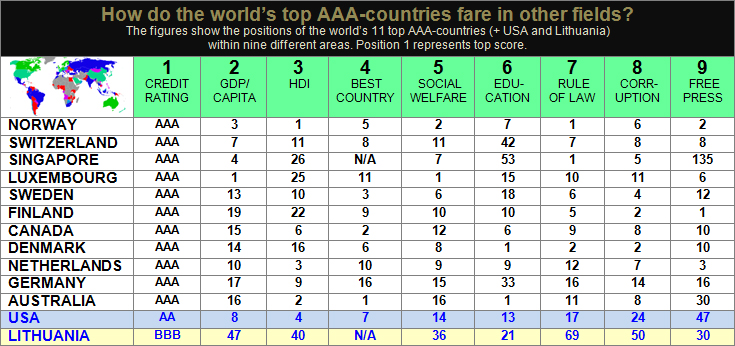
1. Credit rating, Standard & Poor’s
A credit rating evaluates the credit worthiness of a debtor, especially a business (company) or a government. It is an evaluation made by a credit rating agency of the debtor's ability to pay back the debt and the likelihood of default. Credit ratings are determined by credit ratings agencies. The credit rating represents the credit rating agency's evaluation of qualitative and quantitative information for a company or government; including non-public information obtained by the credit rating agencies analysts.
http://en.wikipedia.org/wiki/Credit_rating
2. GDP (PPP) per capita
Gross domestic product (GDP) estimates are derived from purchasing power parity (PPP) calculations, per capita. Such calculations are prepared by various organizations, including the International Monetary Fund and the World Bank.
http://en.wikipedia.org/wiki/List_of_countries_by_GDP_(PPP)_per_capita
3. Human Development Index (HDI), UN
The Human Development Index (HDI) is a composite statistic of life expectancy, education, and income indices to rank countries into four tiers of human development. It was created by economist Mahbub ul Haq, followed by economist Amartya Sen in 1990, and published by the United Nations Development Programme.
http://en.wikipedia.org/wiki/Human_Development_Index
4. Best country to live in, OECD
OECD has a whole new way to rank quality of life in countries around the world. Called "The Better Life Index," the new OECD data set ranks countries based on things like the employment situation, leisure time, and life expectancy.
http://www.businessinsider.com/oecd-better-life-index-2011-5?op=1
5. Social welfare
A welfare state is a "concept of government in which the state plays a key role in the protection and promotion of the economic and social well-being of its citizens. It is based on the principles of equality of opportunity, equitable distribution of wealth, and public responsibility for those unable to avail themselves of the minimal provisions for a good life. Modern welfare states include the Nordic countries, such as Iceland, Sweden, Norway, Denmark, and Finland which employ a system known as the Nordic model. The welfare state involves a transfer of funds from the state, to the services provided (i.e. healthcare, education) as well as directly to individuals ("benefits"). The welfare state is funded through redistributionist taxation and is often referred to as a type of "mixed economy.”
http://en.wikipedia.org/wiki/Welfare_state
6. Education
The United Nations publishes a Human Development Index every year, which consists of the Education index, GDP Index and Life Expectancy Index. These three components measure the educational attainment, GDP per capita and life expectancy respectively. The Education Index is measured by the adult literacy rate (with two-thirds weighting) and the combined primary, secondary, and tertiary gross enrollment ratio (with one-third weighting). The adult literacy rate gives an indication of the ability to reading and writing, while the GER gives an indication of the level of education from nursery (UK & others)/kindergarten (USA & others) to post-graduate education. Education is a major component of well-being and is used in the measure of economic development and quality of life, which is a key factor determining whether a country is a developed, developing, or underdeveloped country.
http://en.wikipedia.org/wiki/Education_Index
7. Rule of Law
The WJP Rule of Law Index is an innovative quantitative assessment tool designed by the World Justice Project to offer a detailed and comprehensive picture of the extent to which countries adhere to the rule of law in practice. The Index provides detailed information and original data regarding a variety of dimensions of the rule of law, which enables stakeholders to assess a nation’s adherence to the rule of law in practice, identify a nation’s strengths and weaknesses in comparison to similarly situated countries, and track changes over time.
http://www.nationsencyclopedia.com/WorldStats/WGI-rule-law-percentile-rank.html
8. Corruption, Transparency International
The Corruption Perceptions Index ranks countries/territories based on how corrupt their public sector is perceived to be. A country/territory’s score indicates the perceived level of public sector corruption on a scale of 0 - 10, where 0 means that a country is perceived as highly corrupt and 10 means that a country is perceived as very clean. A country's rank indicates its position relative to the other countries/territories included in the index.
http://cpi.transparency.org/cpi2011/results/
9. Press freedom
The Press Freedom Index is an annual ranking of countries compiled and published by Reporters Without Borders based upon the organization's assessment of the countries' press freedom records in the previous year. A smaller score in the index corresponds to greater freedom of the press. Reporters Without Borders is careful to note that the index only deals with press freedom and does not measure the quality of journalism.
http://en.wikipedia.org/wiki/Press_Freedom_Index
- Bookmark :
- Digg
- del.icio.us
- Stumbleupon
- Redit it
Triple Helix as model for a Nordic-Baltic vision?
- Posted by - (0) Comment
By Aage Myhre
I believe many of our readers have heard about or even studied the so-called Triple Helix model that emphasizes the need of cooperation and interaction between science, industry and government. I believe this is an extremely interesting model also for a Nordic-Baltic cooperation, as it describes an intensification of a process and a shortening of the time span between discovery and utilization, and increased reliance of industry on knowledge originated in academic institutions.
As knowledge becomes an increasingly more important part of innovation, the university (science and education) as a knowledge-producing and disseminating institution plays a larger role in business innovation. In earlier times, innovation was an activity formerly and largely performed by the industry or government, or depending upon the social system, a bilateral interaction between these two institutional spheres. In a knowledge-based economy, however, the university becomes a key element of the innovation system both as human capital provider and seedbed for new firms. The three institutional spheres (public, private, and academic) – that formerly operated at arms’ length – are increasingly interwoven with a spiral pattern of linkages emerging at various stages of the innovation and industrial policy-making process.
- Bookmark :
- Digg
- del.icio.us
- Stumbleupon
- Redit it
Triple Helix as model for a Nordic-Baltic vision?
- Posted by - (1) Comment
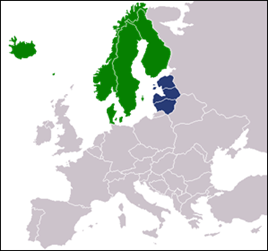
By Aage Myhre
I believe many of our readers have heard about or even studied the so-called Triple Helix model that emphasizes the need of cooperation and interaction between science, industry and government. I believe this is an extremely interesting model also for a Nordic-Baltic cooperation, as it describes an intensification of a process and a shortening of the time span between discovery and utilization, and increased reliance of industry on knowledge originated in academic institutions.
As knowledge becomes an increasingly more important part of innovation, the university (science and education) as a knowledge-producing and disseminating institution plays a larger role in business innovation. In earlier times, innovation was an activity formerly and largely performed by the industry or government, or depending upon the social system, a bilateral interaction between these two institutional spheres. In a knowledge-based economy, however, the university becomes a key element of the innovation system both as human capital provider and seedbed for new firms. The three institutional spheres (public, private, and academic) – that formerly operated at arms’ length – are increasingly interwoven with a spiral pattern of linkages emerging at various stages of the innovation and industrial policy-making process. Furthermore, in addition to these institutional linkages among spheres, each sphere may take up the role of the other.
A triple helix of university-business-government relations transcends previous models of institutional relationships, whether socialist (No. 1) or laissez-faire (No. 2), in which either the polity or economy predominated and with the knowledge playing a subsidiary role.

Triple Helix 1: The communist model.
An etatist or socialist model of university-industry-government relations
(where the Baltic States were during the Soviet period).

Triple Helix 2: The laissez-faire model.
A laissez-faire model of university-industry-government relations
(where the Baltic States very much are today).

Triple Helix 3: The Scandinavian model.
This triple helix model is an attempt to account for a new configuration of institutional forces emerging within innovation systems (a stage the Nordic countries to a quite high degree have reached), and I believe this is a good model for joint cooperation and innovation between the Nordic and the Baltic States.

Triple Helix 4: The endless transition model.
Triple Helix no. 4 is one in which the overlay of communications and expectations at the network level guides the reconstructions of institutional arrangements. It is not expected to be stable and the sub-dynamics in the innovation process are continuously reconstructed through discussions and negotiations. What is considered as ‘industry’, what as ‘market’ cannot be taken for granted. Each ‘system’ is defined and can be redefined as the research project is designed. Thus, the triple helix hypothesis is that systems can be expected to remain in an endless transition.
This model indicates that innovation and cooperation should take place across sectors and country boundaries, for example that a university in Sweden very well could work with a business venture in Lithuania, and I believe the combination of Triple Helix 3 and 4 is a good solution for cooperation and collaboration within the Baltic-Nordic region as this will lead to increased integration and development that will give us advantages ahead of most other regions of the world.
My experience from Lithuania does, however, not make me too optimistic about the situation for cross-sector cooperation. I was, for example, asking the General Director of Omnitel (the leading mobile phone operator in Lithuania) about the situation for higher education within technology. His answer was that one single word would be description enough; „It‘s bad!“
And a few years ago I asked the General Director of the Libra Group (a leading Lithuanian company within wood processing) to tell me what kind of support and help he had from the authorities in his important business. His short answer was: „I don‘t expect anything from them, and I‘m happy as long as they don‘t create problems for me“.
- Bookmark :
- Digg
- del.icio.us
- Stumbleupon
- Redit it
- Posted by - (0) Comment
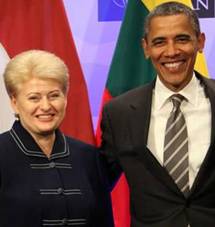
The complicated
Obama - Grybauskaitė
relationship
Read more…
__________________________
Grybauskaitė probably would be more successful in securing an invitation to visit Kremlin than the White House

Stan Backaitis
Washington, D.C.
__________________________
Only way the Lithuanian president would see the inside of the White House would be in a tourist tour
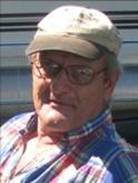
Richard Vitkauskas,
New York
__________________________
Not some friends’ dinner parties where she can choose to go or not

Nellie Vin,
New York
- Bookmark :
- Digg
- del.icio.us
- Stumbleupon
- Redit it
- Posted by - (0) Comment
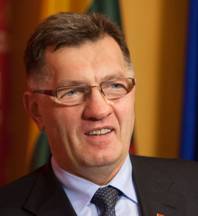
As Lithuania's prime minister,
A. Butkevičius plans first visits to Latvia and Poland
Asked to comment on President Dalia Grybauskaitė's decision not to go to Warsaw on Sunday when Poland marks the Independence Day, Butkevičius refused to comment but added that he was of the opinion that "relations with Poland need to be improved and warmed up." "It would be incorrect for me to comment on the president's decision. In the end, it’s the president's opinion and I respect that," the social democratic leader said.
"My position is that we need to improve and warm up our relations with Poland and I believe we could do a lot and reach a lot with such a neighbor as Poland which is very big and I see it as a strategic partner in implementing many common projects and as a partner in looking for agreement even at certain meetings of the Council, and we could do a lot of things by supporting each other," Butkevičius said.
It was announced on Monday that President Grybauskaitė would not attend Poland's Independence Day commemoration on Sunday. The president's spokeswoman Daiva Ulbinaitė told BNS Grybauskaitė would not attend the Sunday commemoration due to urgent internal policy-related issues.
"Due to urgent internal policy-related issues, the president will not go to Poland on 11 November. Sending her congratulation to Polish President Bronislaw Komorowski on the occasion of the Independence Day, the president invited the Polish counterpart to discuss bilateral and regional cooperation issues important for people of Lithuania and Poland at a working meeting in early December or at any time convenient for the Polish president," Ulbinaitė told BNS on Monday.
Read more...
- Bookmark :
- Digg
- del.icio.us
- Stumbleupon
- Redit it
- Posted by - (0) Comment
The complicated Obama -
Grybauskaitė relationship
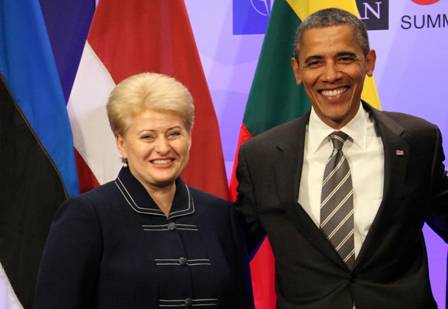
In 2010, Lithuanian President Dalia Grybauskaitė openly disagreed with
Obama on a new arms reduction plan, claiming it harmed Lithuanian
security, and in a rather shocking move refused to take part in
a dinner with Obama in Prague. Grybauskaitė was the only
invited president who refused to meet with Obama.
In April 2010, Barack Obama and his Russian counterpart Dmitry Medvedev signed a new arms reduction treaty in Prague, primarily with regards to the Eastern European missile defense system that had been planned by the George W. Bush administration.
After the signing, President Obama invited the presidents of Lithuania, Latvia, Estonia, and Romania, as well as the prime ministers of Poland, Czech Republic, Bulgaria, Croatia, Hungary, Slovakia and Slovenia to attend a dinner with him in Prague.
Lithuanian President Dalia Grybauskaitė openly disagreed with Obama on the new reduction plan, claiming it harmed Lithuanian security, and in a rather shocking move refused to take part in the dinner in Prague. Grybauskaitė was the only invited president who refused to meet with Obama.
- Bookmark :
- Digg
- del.icio.us
- Stumbleupon
- Redit it
- Posted by - (6) Comment
The complicated Obama -
Grybauskaitė relationship

In 2010, Lithuanian President Dalia Grybauskaitė openly disagreed with
Obama on a new arms reduction plan, claiming it harmed Lithuanian
security, and in a rather shocking move refused to take part in
a dinner with Obama in Prague. Grybauskaitė was the only
invited president who refused to meet with Obama.
In April 2010, Barack Obama and his Russian counterpart Dmitry Medvedev signed a new arms reduction treaty in Prague, primarily with regards to the Eastern European missile defense system that had been planned by the George W. Bush administration.
After the signing, President Obama invited the presidents of Lithuania, Latvia, Estonia, and Romania, as well as the prime ministers of Poland, Czech Republic, Bulgaria, Croatia, Hungary, Slovakia and Slovenia to attend a dinner with him in Prague.
Lithuanian President Dalia Grybauskaitė openly disagreed with Obama on the new reduction plan, claiming it harmed Lithuanian security, and in a rather shocking move refused to take part in the dinner in Prague. Grybauskaitė was the only invited president who refused to meet with Obama.
After becoming Lithuania's president in 2009, Grybauskaitė wasted no time defining her leadership. "Yes, you have to be a strict and loud partner if you want to be heard in the conversation," she told the Associated Press in a 2011 interview.
"Lithuania is not used to a straightforward, terse, forceful way of making statements. I admit using this style in pushing NATO defense plans for the Baltic States," she said, referring to U.S. cables released by WikiLeaks earlier this year, showing that NATO in January 2010 privately decided to expand a NATO defense plan for Poland to also cover Estonia, Latvia and Lithuania.
"I am afraid that if I had chosen a different tone, Lithuania and its neighbours would be still waiting another six years for these," she said to the Associated Press, giving herself credit for USA’s and NATO’s new strategy as revealed by WikiLeaks.
In 2011 President Obama invited the same East European state leaders for a dinner in Poland, and this time President Grybauskaite accepted the invitation, a move presumably leading to a warmer relationship between the two presidents.
At the working dinner the Lithuanian president underlined that NATO anti-missile defense must cover all the NATO allies. According to the president, NATO-Russian relations are particularly important for Lithuania owing to its strategically special location on the boundary of the Alliance’s territory. She said the agreement reached in the NATO Lisbon Summit must not be changed and must not become the object of negotiations with Russia.
It still is little known about how President Grybauskaite’s ‘reflections’ vs. the Obama administration in 2010 and NATO in 2011 were perceived by the said parties. We can only hope they were not given too much weight and that the relationships with Lithuania have not been harmed. Her acceptance of last year's invitation from
Obama, and the absence of new provocative statements, suggest that she has adopted a more conciliatory
and diplomatic style and line.
The right to disagree and discuss any topic should always remain free and open, but I think our president would be better off by following more recognized protocol procedures when such delicate issues are to be discussed at high international level.
To have a best possible relationship with the U.S. and the new Obama administration will be important for Lithuania, and one can only hope that his reelection will come to represent another positive step towards improved dialogue and cooperation also between Lithuania and the United States.
Aage Myhre, Editor-In-Chief
- Bookmark :
- Digg
- del.icio.us
- Stumbleupon
- Redit it
VilNews e-magazine is published in Vilnius, Lithuania. Editor-in-Chief: Mr. Aage Myhre. Inquires to the editors: editor@VilNews.com.
Code of Ethics: See Section 2 – about VilNews. VilNews is not responsible for content on external links/web pages.
HOW TO ADVERTISE IN VILNEWS.
All content is copyrighted © 2011. UAB ‘VilNews’.
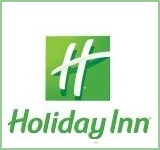
 Click on the buttons to open and read each of VilNews' 18 sub-sections
Click on the buttons to open and read each of VilNews' 18 sub-sections 








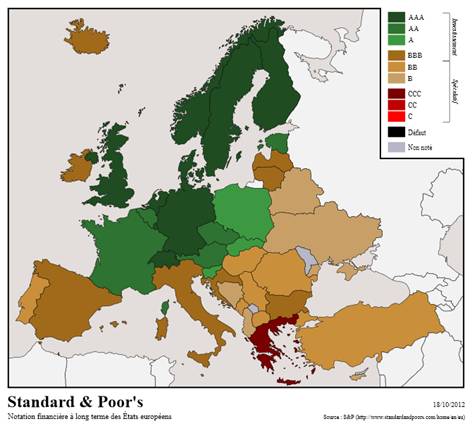
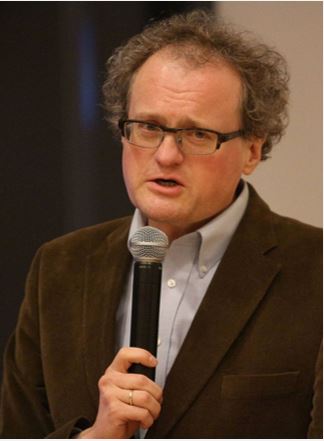
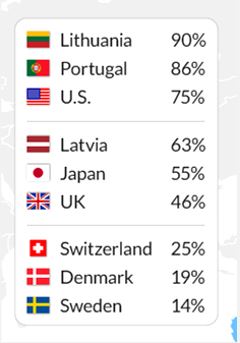
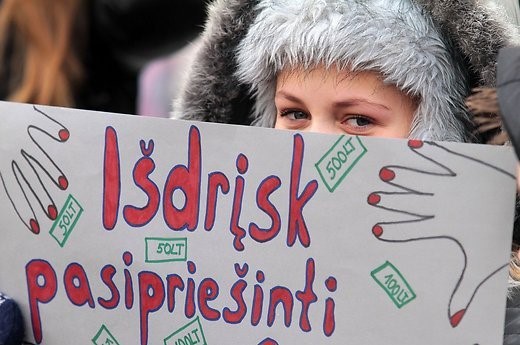


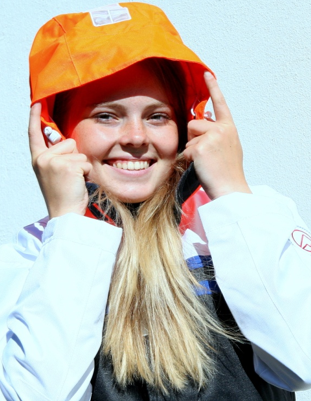
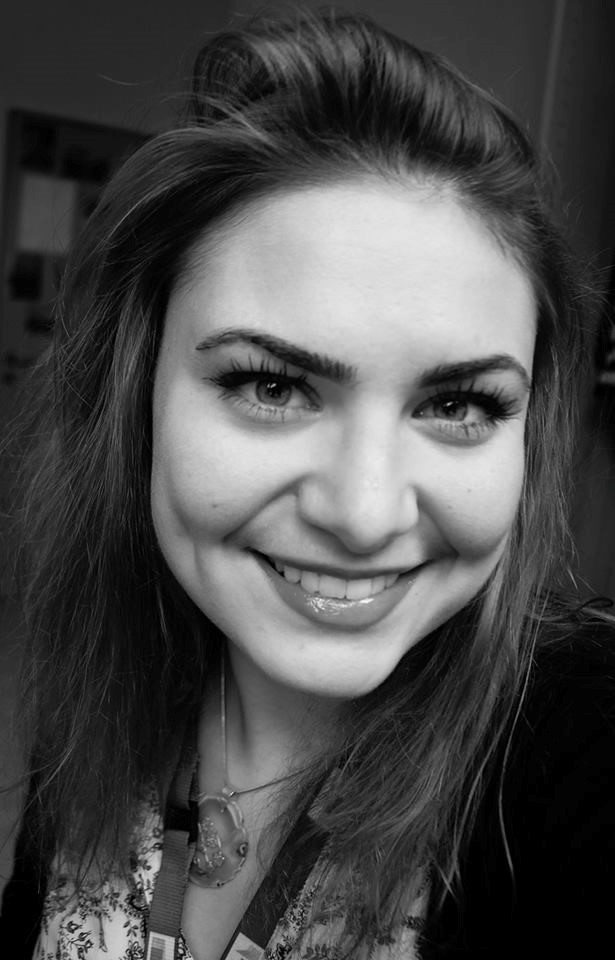
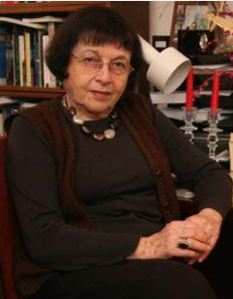
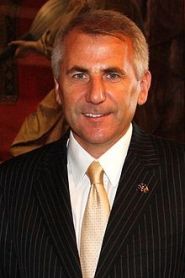
.jpg)
